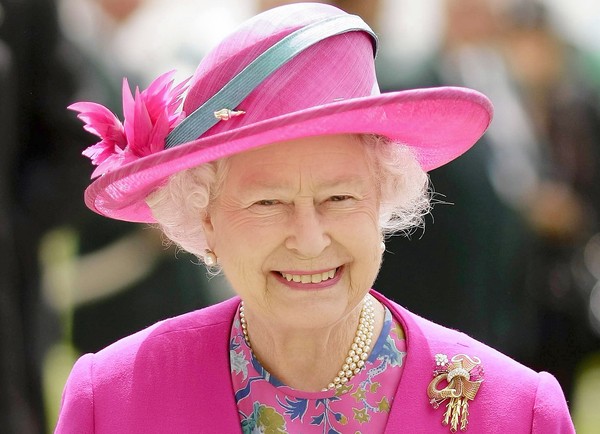
Have you ever done the #RussianDollChallenge? Source: Medium.com.
Some of you may have heard of the #RussianDollChallenge, a hashtag I created on Twitter in September 2018 to discuss direct female ancestral genealogies. And why, you may ask, did this become a popular (dare one say, trending!) topic and, more importantly, why did I create the hashtag to begin with?
You have all owned or at least heard of Russian dolls, those charming, empty, heavily-decorated wooden puppets that, decreasing in size, are stacked one inside the other. When displayed, they form a neatly-ordered row, each representing a “generation”. Because the bigger doll is generally considered the “mother” of its immediately smaller “daughter”, the analogy with the world of genealogy is obvious. If we, as the smallest piece of all – i.e. the smallest daughter (or son, as the case may be) – begin to trace our lineage through an unbroken chain to our mother, and her mother, and her grandmother, and her great-grandmother, and so on, we will at some stage reach a point where we are simply unable to carry on further, be it because no records are available, or because the identity of the most remote female ancestor cannot be established.
Don’t believe me? Have a go! Although I have successfully managed to locate the immense majority of my ancestors in the last – I’m estimating here – seven or eight generations, when it comes to my matrilineal ancestry, I find myself struggling. My maternal grandmother’s maternal grandmother was born in Spain in 1868; her mother was born in 1845, and her grandmother in 1816; her mother before her was born in 1773, but her mother (that’s my six-times great-grandmother, in case you weren’t counting) is a mystery. Because I have not been able to find her baptism, I can just assume that Gabriela Gómez was born sometime during the mid 1700s, probably around the same area where she would later marry twice and give birth to four daughters.
Considering I’ve been able to track my ancestry up most lineages until well beyond the year 1750, it is very frustrating to have this matrilineal brick wall hovering over me – and believe me, I have tried to find Gabriela’s origins time and time again, to no avail. My father’s side is equally frustrating, if for a moment we ignore the fact that I am connected to my paternal grandmother via my father, and not my mother. My father’s five-times great-grandmother was a Mary Lewis, who I assume was born, possibly in Herefordshire, sometime around the mid-1750s.

You’d be surprised how few generations Queen Elizabeth II can trace her line back on her direct maternal side… Source: TudorTimes.
You’d be surprised how easy it is to become stuck if you try the #RussianDollChallenge. Take Queen Elizabeth II, for instance. Her father’s line is impeccably royal, and there is even some blue blood floating about on her maternal grandfather’s side, but her maternal grandmother’s family is surprisingly un-royal (and therefore makes genealogical research harder). The Queen’s maternal grandmother, the Countess of Strathmore, was born Nina Cecilia Cavedish-Bentinck in Belgravia in 1862; her mother was Caroline Burnaby (1832 Leicester -1818 Dawlish), who was in turn the daughter of Anne Caroline Salisbury (1805 Dorchester – 1881 London). Her mother was Frances Webb (1775 Stanway, Gloucestershire – 1862 Salisbury), but her mother, Marry Garritt, is a mystery. When and where she was baptised has not yet been fully established – I have done my best to trace it too, and concluded there are at least two potential candidates who could be the Queen’s direct ancestor. In short, this means that Queen Elizabeth II cannot trace her matrilineal line with certainty beyond her four-times great-grandmother – and that is historically quite recent, especially for a royal. Fortunately the number of matrilineal generations increases for Mia Grace Tindall and Lena Elizabeth Tindall, Princess Anne’s granddaughters via her daughter Zara, who happen to be Queen Elizabeth’s only living female-line descendants other than her three sons (the Prince of Wales, the Duke of York and the Earl of Wessex), as well as Princess Anne’s son Peter Phillips.

Anne Caroline Burnaby (née Salisbury) is Queen Elizabeth’s great-grandmother – though who her great-grandparents were remains a mystery. Source: Wikipedia.
But why should one try to do the #RussianDollChallenge? Well, as any genealogist knows, women tend to be underrepresented on most official records – from marriage certificates (which don’t feature the mother’s name in England and Wales) to baptisms and wills, where the wife’s maiden name is rarely mentioned. With such an obliteration of their original identity, is it any wonder that tracing a woman back in history is much harder than it is tracing a man?
To conclude, by doing the #RussianDollChallenge we are not only figuring out our own origins and remembering our female ancestors, but we are also highlighting the importance of our female-line heritage and our matrilineal history.
March 8th is International Women’s Day, and I invite you all to use this article as a source of inspiration to tweet and post about your female-line ancestors in the days to come. Let me know in the comments below, or via my Twitter feed, of how many generations back you’ve been able to go on your matrilineal side. Remember to use the hashtag #RussianDollChallenge and to hit the “like” button if you’ve enjoyed this article!

You may be the last doll in a long chain of Russian dolls… But how far back can you go? Source: Medium.com (sofia.boulamrach)
